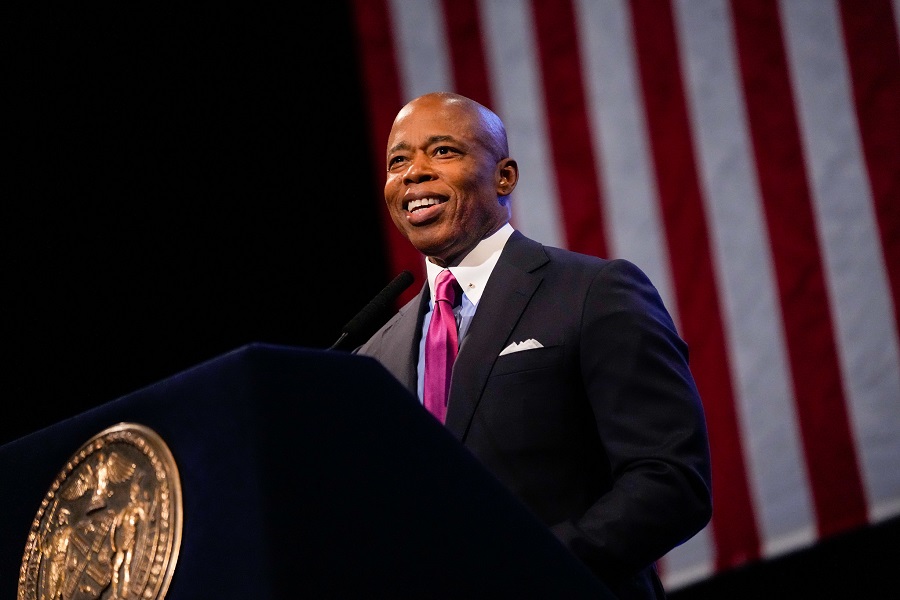 When Harlem Hospital Center opened its doors on April 18, 1887, the physical plant consisted of a leased, three-story wooden building, it was located at the juncture of East 120th Street and the East River. The purpose of the institution was to provide health care for the rapidly growing population north of Central Park. The Hospital was a former Victorian mansion lit with ornate gas fixtures and heated by marble fireplaces.
When Harlem Hospital Center opened its doors on April 18, 1887, the physical plant consisted of a leased, three-story wooden building, it was located at the juncture of East 120th Street and the East River. The purpose of the institution was to provide health care for the rapidly growing population north of Central Park. The Hospital was a former Victorian mansion lit with ornate gas fixtures and heated by marble fireplaces.
The Hospital’s initial purpose was to serve as a reception center for patients awaiting transfer to Ward’s and Randall’s Islands. It also served as an emergency branch of Bellevue Hospital, providing both ambulance and hospital service.
From the beginning, Harlem Hospital’s responsibility was to provide medical care for the poor, specifically to those living in the rapidly growing districts north of Central Park. Although this area had not yet felt the impact of the first of many waves of African-American immigrants from the South, the hospital’s 54 beds soon were grossly inadequate to meet the needs of the rapidly growing community. The dispensary was moved to a wooden building on a vacant lot near Harlem Hospital. The wooden building at one time had been used as the Out-Patient building for Gouverneur Hospital.
In 1900 land was acquired by the City of New York on the east side of Lenox Avenue from 136th Street to 137th Street for a hospital of 100 beds. In 1903 additional land was purchased for the future erection of a nurses home, a wing to the hospital, a power house, and stables. The new hospital, with a bed capacity of 150 and located on the east side of Lenox Avenue, was opened on April 13, 1907.
In 1917, Harlem Hospital hired several African-American nurses, and as a result, many of the white nurses resigned. On January 1, 1923, a Training School for Colored was established at Harlem Hospital. The school steadily grew in size and stature. Its admission policy was later amended to include qualified applicants, regardless of race.
Immediately after the war, Harlem received its first big wave of African-American immigrants from the South. Agitation, which up to this time had been sporadic, increased for the appointment of an African-American doctor to the visiting staff of Harlem Hospital. The forces of integration triumphed. In 1919, Dr. Louis T. Wright was appointed clinical assistant in the out-patient department, the lowest job possible at Harlem Hospital. His service there began on January 1, 1920. Until that day, no African-American physician had been on staff at any city hospital. Four doctors resigned from Harlem Hospital in protest and Dr. Casmo D. O’Neil, the superintendent and person directly responsible for Dr. Wright’s appointment was promptly demoted to the information booth at Bellevue Hospital.
The early hostility that Dr. Wright met at Harlem Hospital from his white colleagues only served to increase his desire to excel. In 1928, after taking a competitive civil service examination, he became the first African-American Police Surgeon of the City of New York; and in 1934 he was the first Negro admitted to fellowship in the American College of Surgeons since Dr. Daniel Hale Williams, who was admitted at the time of the formation of the College.
In 1943, Dr. Wright was appointed director of the department of surgery at Harlem Hospital, a position he held until his death in 1952. After the initial appointment of Dr. Wright to the out patient department of Harlem Hospital, the appointment of other qualified African Americans followed. In January 1926, when three other African-American physicians were added to the visiting staff, Dr. Wright was elevated to the rank of assistant visiting physician. At the beginning of 1929, of the total number of 64 physicians and surgeons on the in-service staff at Harlem Hospital, seven were African Americans.
The position of director of surgery at Harlem Hospital was filled after the death of Dr. Wright by Dr. Aubre De L. Maynard. In 1929, Dr. Maynard was the first African-American intern officially appointed to the house-staff at Harlem Hospital. A third individual who contributed greatly to the development of Harlem Hospital was Dr. Peter Marshall Murray, who was appointed in 1929 as a provisional assistant adjunct visiting gynecologist.
Related articles

Become a Harlem Insider!
By submitting this form, you are consenting to receive marketing emails from: . You can revoke your consent to receive emails at any time by using the SafeUnsubscribe® link, found at the bottom of every email. Emails are serviced by Constant Contact






















